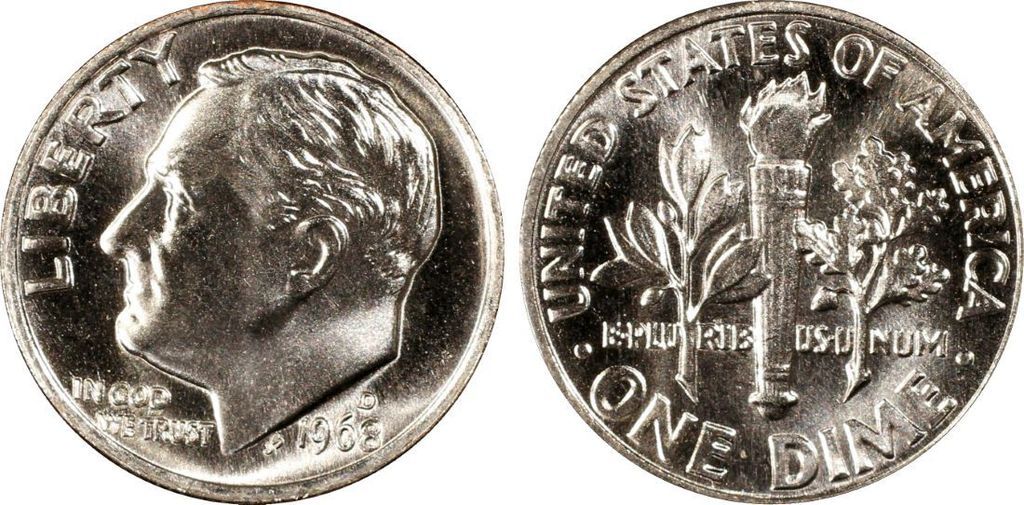What's going on with these dimes? Grease or old dies or bad planchets or ?
 TequilaDave
Posts: 271 ✭✭✭
TequilaDave
Posts: 271 ✭✭✭
So does anyone have a clue why so many clad dimes minted in the 60's have their dates and motto's so mushed out? Here's 3 examples from 3 separate years with very similar issues - the bottom rims and everything near them are mushy and almost non-existent. Is this a die issue, a grease issue, a plancet issue or just poor quality control?

2
Comments
They're struck from worn or 'overused' dies.
Not really considered errors - more of a minor anomaly.
By the way, you should see of of the dimes and quarters
from the last few years like this, especially the last 5-8 years.
This was a period when coins were rapidly transitioning from .900 fine silver to clad. The clad coins were needed quickly and quality took a back seat to production numbers.
What do you suppose it is about the portion of the die at ~ 6 o'clock that wears differently than any other portion of the die? There must be something about the way the dies press or eject or ? that causes the bulk of the wear to occur in this one section of the die.
Filled die
Don't know for sure, but it might relate
to the way the dies are set up in the press;
the Mint wouldn't really care if some of the
coins are 'weak' in that area. They might care
in the first few days/weeks/whatever of striking
new coinage, but after awhile, they're just
striking little round pieces of metal with
pictures on them.
Could also relate to the reverse design opposite the obv.
area, but I don't see anything on the top of the reverse that would confirm that.
Here's the reverse of these dimes and they show basically the same mushiness, if not more. It just strikes me as odd that the wear is concentrated in the same area over the span of several years.
The angle of the dangle - the dies were
probably not set up perfectly, or shifted
at a very slight angle after striking a few
hundred thousand coins.
I've seen a majority of the post silver early clads (1965-1967) 7FB & and 1 8FB and they are some of the most beautifully struck clad dimes you will see. The mint made billions of dimes these 3 years, but made only an an extremely small handful of what I would call gems.
Later, Paul.
1966 MS67FB

1968-D MS67+FB

Later, Paul.
Nice! Is that '66 a business strike or SMS? I've a box of original bank rolls from '65 to 68 and while going thru them I found the above examples. I really love seeing the flow lines in some of these dimes. In fact, I have a few that would give the 68-D a run for its money...maybe I should submit a couple and see how they fare.
They are business strikes
Later, Paul.
I always love learning new facets concerning coinage

Thanks to all who shared info here
Successful transactions with : MICHAELDIXON, Manorcourtman, Bochiman, bolivarshagnasty, AUandAG, onlyroosies, chumley, Weiss, jdimmick, BAJJERFAN, gene1978, TJM965, Smittys, GRANDAM, JTHawaii, mainejoe, softparade, derryb, Ricko
Bad transactions with : nobody to date
Can a coin struck from a worn die still receive a high mint state grade if it is mark free and lustrous?
It probably has something to do with metal displacement, the torch tip (which is at that location on the reverse) needing a lot more metal to fill the space.
Pete
Stooge...that 66 is a MOOSE!!!! Nice clad Dime!
Interesting anomaly.... I had not noticed this.... Thanks for the inputs Fred.... now I will be checking my dime change for this....my OCD will kick in immediately Cheers, RickO
Cheers, RickO
This.
I think it would be limited by the mushy strike.
My YouTube Channel